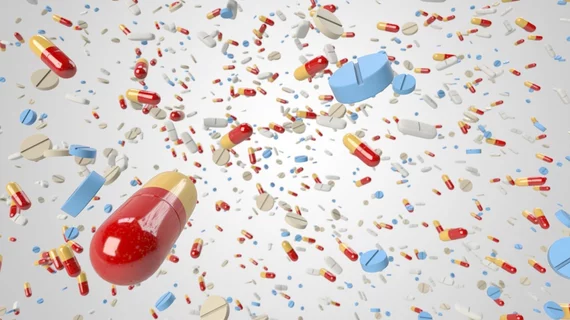After poring over the chemical compositions of more than 107 million molecules used to make all sorts of drugs, a machine learning algorithm has plucked out one unexpected candidate that may be medicine’s best hope yet against dreaded superbugs.
The overnight-star molecule is called halicin. Until now, it was thought to be a possible treatment option for diabetes. The researchers at MIT who developed the algorithm have changed that, finding the molecule effective in beating back C. diff and other antibiotic-resistant bacteria in mice.
One of the team’s most striking findings is that humans alone would probably never have thought to try halicin as an antibiotic, since its structure is nothing like that of antibiotics now in use.
What’s more, from a set of 23 empirically tested predictions of antibiotic properties in ZINC15, a massive database of commercially available compounds, the MIT model identified eight other compounds with previously unknown antibacterial properties.
“This work highlights the utility of deep learning approaches to expand our antibiotic arsenal through the discovery of structurally distinct antibacterial molecules,” write lead author Jonathan Stokes, PhD, and colleagues in their study, which was published online in Cell Feb. 20.
Few truly new antibiotics have come down the pike in recent years if not decades, as drugmakers have mostly come out with variants on existing formulations.
As pointed out in MIT’s own coverage of the AI-aided discovery, screening new antibiotics often costs drugmakers dearly, soaks up tons of time and leaves unaddressed the role of chemical diversity in foiling potential superbugs.
“We’re facing a growing crisis around antibiotic resistance, and this situation is being generated by both an increasing number of pathogens becoming resistant to existing antibiotics and an anemic pipeline in the biotech and pharmaceutical industries for new antibiotics,” says the study’s senior author, James Collins, PhD.
The researchers named the molecule halicin after HAL 9000, the sentient computer in the sci-fi classic 2001: A Space Odyssey.
But the advance is anything but fictional.
The groundbreaking work at MIT “signifies a paradigm shift in antibiotic discovery and indeed in drug discovery more generally,” Roy Kishony, a professor of biology and computer science at the Israel Institute of Technology, tells MIT News. “[T]his approach will allow using deep learning at all stages of antibiotic development, from discovery to improved efficacy and toxicity through drug modifications and medicinal chemistry.”
Click here to read the full study in Cell and here for MIT’s complete internal coverage.

